PARIS TO ANCASTER - ONTARIO - CANADA - APRIL 29/30 2023
Get Ready for Paris to Ancaster 2023!
With the addition of the 100k route, P2A this year will pose some challenges to riders that are opting for this extended route. Many riders come for the enjoyment and for the challenge of completing it, whereas others come to see how well they can do against the others in the field, perhaps looking to make the top 50, 100 or 200 in the field. If you’re serious about training and preparing for P2A, for any of the race routes, you’ll want to be training with a power meter and you’ll want to be using Xert. Xert is sponsoring the race this year, and the Xert Breakthrough Training platform will be your go to system to help you be ready to do your best on race day. In this article, you will: Training With Xert |
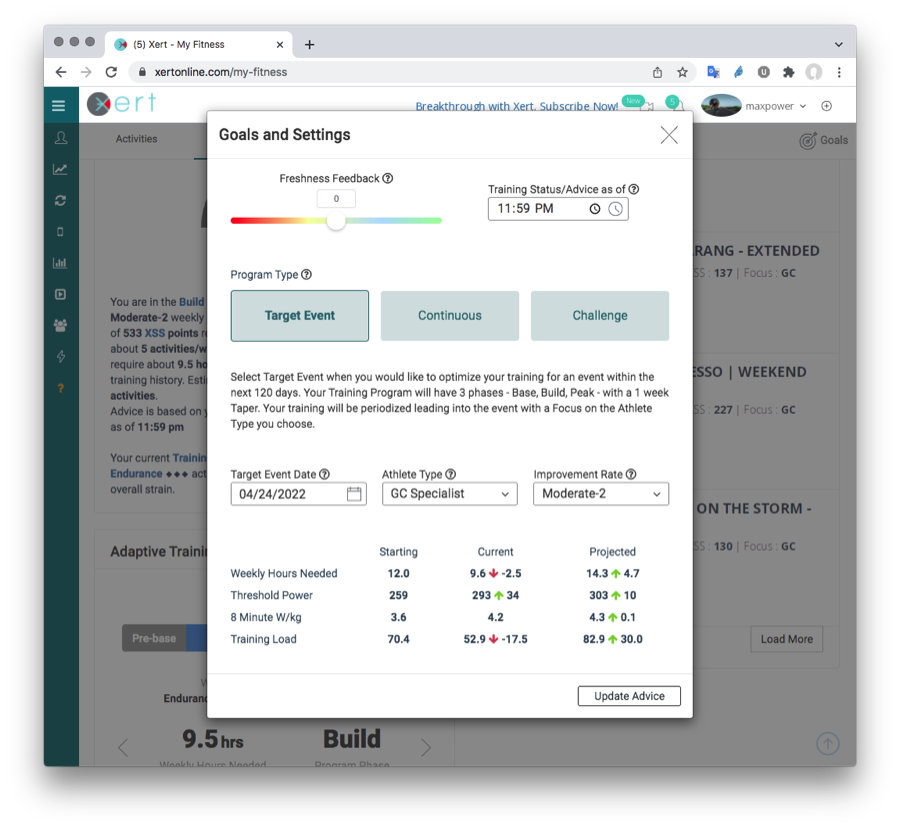
| These choices will help guide you towards the training you’ll need to do in preparation for the event. The remaining choice for you is to choose the Improvement Rate under Goals and Settings. Be sure to watch the Xert Academy videos on Youtube if you’re new to the system and would like to understand more about how the system helps you prepare yourself leading into the race. |
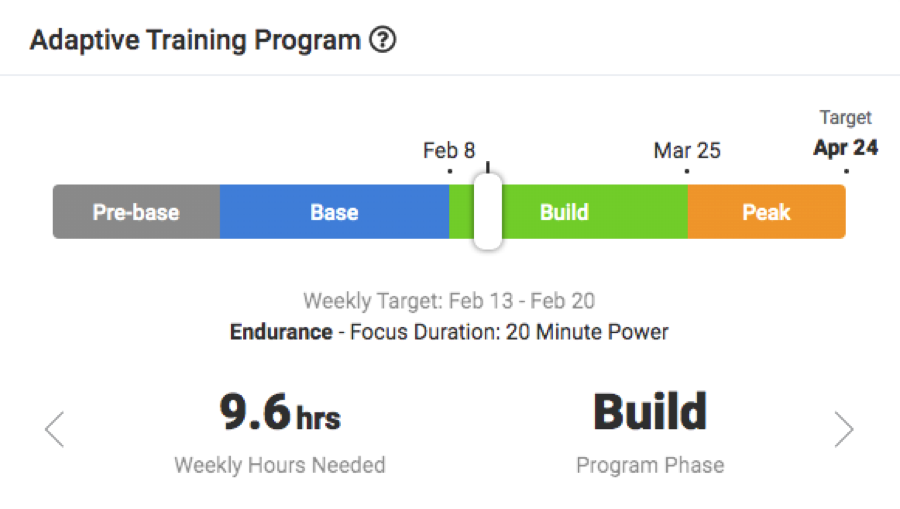
| Types of Workouts You Need to Do As part of the Xert Training Program, you’ll receive recommendations on the types of workouts you’ll need to do and the goals you should be looking to achieve for each workout. Xert will recommend Xert workouts you can do from the many workouts in the workout library, but you can also choose to do other rides, indoors or outdoors, to accomplish the same goals. It’s this flexibility that helps you get more out of your available time and opportunities to train both indoors and out, helping you reach higher levels than with a static training plan. We recommend that you choose GC Specialist as your Athlete Type. What this means is that your training will become more and more specific to this type of rider as you approach race day. There are many GC Specialist-style (GC Specialist focused in Xert terms) workouts in the workout library you can choose to do. The workouts mimic both the intensity and the rest in between intervals that are similar to what you’ll experience on race day. |
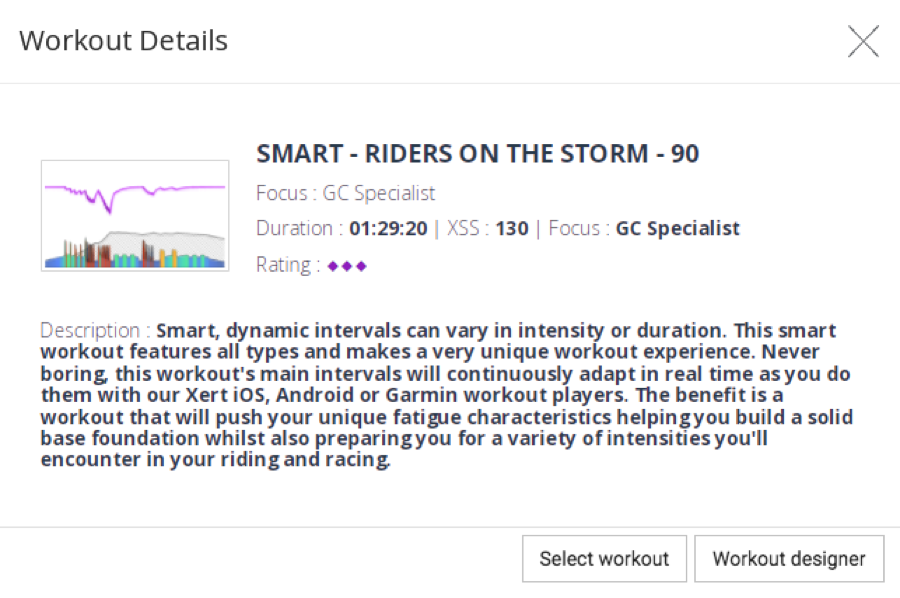
Training Sessions Virtual P2A Racing Simulation Sessions Every Sunday features a special session that is a simulation of an actual race. Join the session to get a sense of what the experience will be like with a video of the race itself, together with challenging targets to hit during the session. This practice will be as close as you’ll get to doing the actual race, without leaving your home. |
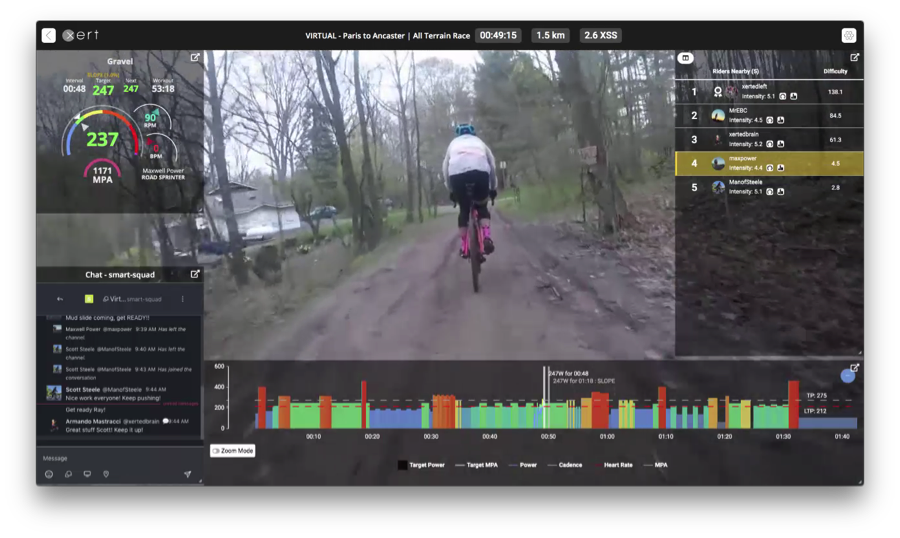
Race Day Preparations and Tapering for the EventUse the Sunday April 17th Virtual P2A simulation session as your last big ride in preparation for the event. After that Sunday, you should reduce your training during that week, i.e. tapering, for the event. Do some easier rides if still fatigued from training or some shorter high-intensity rides with similar intensities as in the race, if you’re fresh. Do a light ride on Saturday before the race with some short intense efforts to ensure you’re in tip top shape for Sunday the 24th. On race day, make sure your bike is fully tuned up. Consider using a thicker chain lube if the conditions are going to be wet or muddy. Waxing your chain is now the big thing so consider doing that to get an added edge. An Xerter’s Analysis of P2ABelow, Xert’s Chief Sport Scientist Dr. Stephen Cheung assesses his 2018 Paris to Ancaster data file to glean some lessons about both racing demands and favourite workouts he does to prepare. While it is true that fitness is fitness, the best path to success in racing is to match your training and fitness to the requirements of the event. Let’s take a look at some of my past P2A data files to see what we can learn about best ways to train and also to race it! |
Coloured power data, purple line is Maximal Power Available (MPA), grey line is elevation.
Here is my Xert data file from 2018, where I had an absolute peak performance in the 70 km event, placing 177th overall from a previous best of 263rd. I stayed in a smooth and fast moving pack of about 6-8 riders all the way until the final mud chute. A quick glance at the power file shows that gravel racing is not at all steady like a time trial. Indeed, there’s barely more than a few seconds of steady effort at a time. Rather, there are hundreds of short hard bursts above your threshold power, and they take place throughout the entire race. Being able to perform these hard bursts over and over and over again requires both high anaerobic capacity, but also high aerobic capacity. The latter is essential in helping you recover from each hard burst, and to make those hard efforts even after 2-3h of racing. Lesson 1. Build that base. |
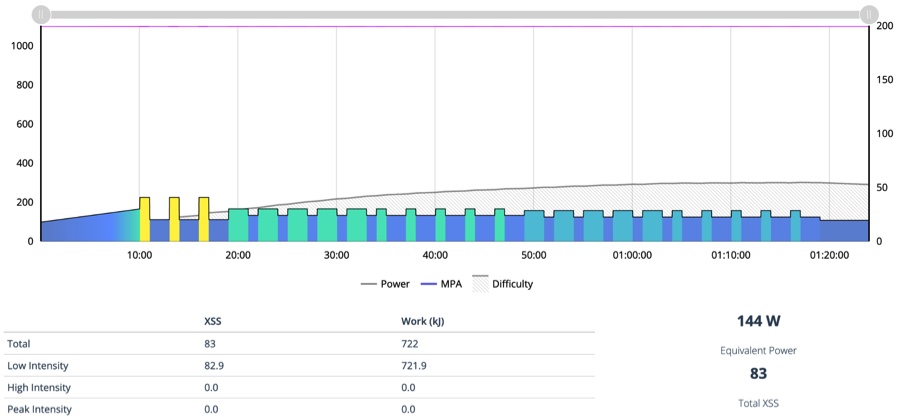
“Cheung - Don’t Look Back in Anger” is a good example of a longer endurance workout for base building.
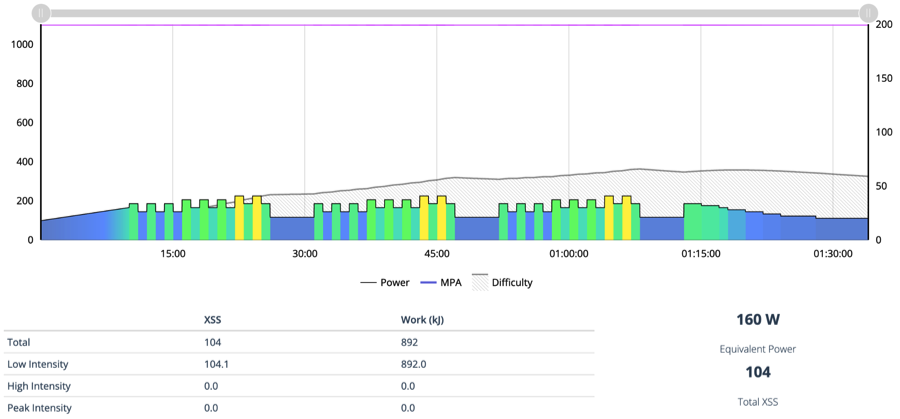
“Working Man - Extended” is another good longer endurance ride.
Both feature enough variability that you’re not slogging through a long steady effort the whole time.
Lesson 2. Lots of Repeated Efforts In this way, gravel races are similar to cyclocross or mountain bike events. There are lots of bursts, but you are mainly pushing hard for brief periods, usually to clear an obstacle or short hill. Therefore, in training, the emphasis does not need to be on efforts that take you to your limit in terms of taking you to absolute fatigue. Rather, the focus should be on being able to handle repeated short bursts over and over for a very extended time. |
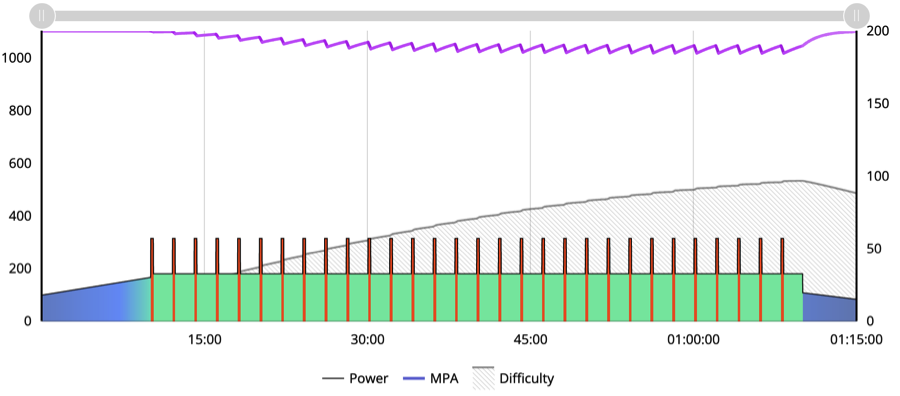
During the Build period, it’s hard to go wrong with variations of the Hour of Power type workouts, where you spend an hour at a sustained hard effort, then every couple of minutes throw in 15 s or so of hard effort and come right back to that sustained effort. Lesson 3. Intensity and Repeatability I really like 20/20 or 15/15 intervals, where you go very hard for 20 or 15 seconds, then have the same amount of time to recover where you are still riding and not completely resting. Doing multiple sets also really help with your repeatability and being able to ride hard near the end of the race rather than just surviving it. So the goal is to have your hard efforts at a level where you can do all of the planned efforts at similar power output, rather than a really hard first set and then a much weaker second and third set. |
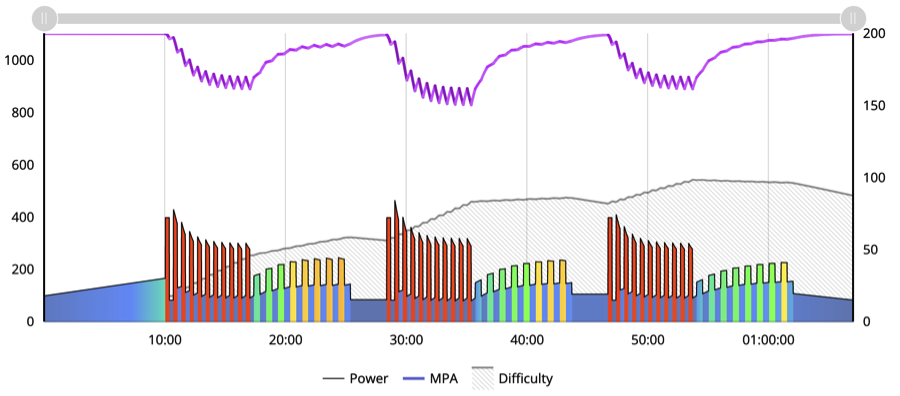
One of my favourites from the Xert workout library is Let the Sparks Fly, featuring alternating 20 seconds on/off. This workout takes you down to intermediate levels of fatigue, then keeps you there by dynamically adjusting the wattages of both the on and off efforts. It also simulates gravel events in that even the recovery blocks are not simply “ride easy” efforts but forces you to maintain a sustained level of fatigue. Finally, the three set enforces the repeatability concept of being able to sustain hard efforts late into a gravel event. |


